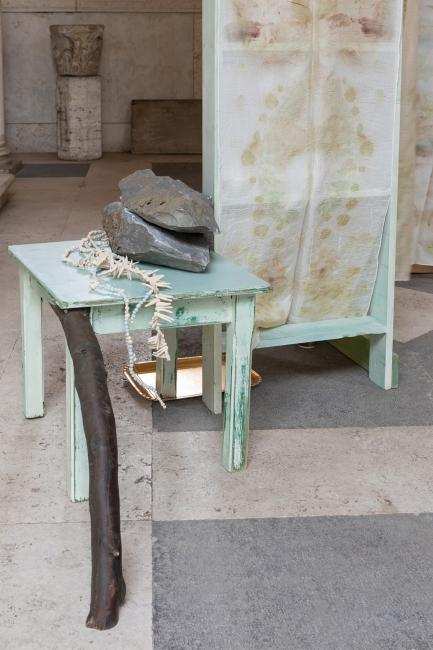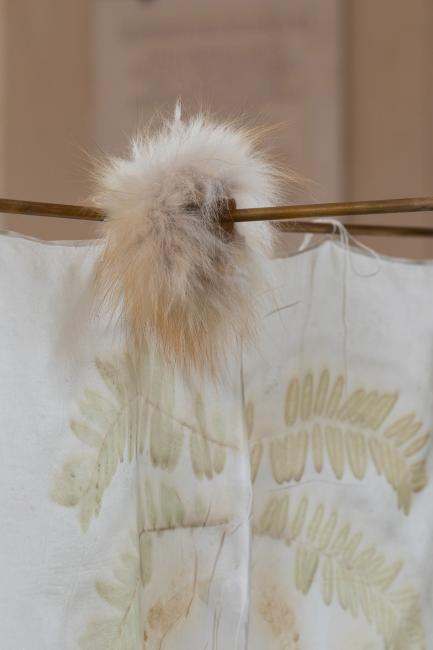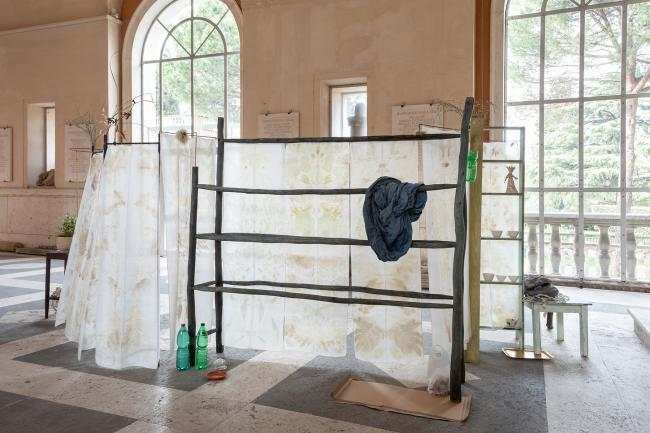
Chiara CamoniUna Tenda #03
On walks through the city and countryside, Chiara Camoni gathers armfuls of plants that she then presses into silk. What is left behind are the ghostly imprints of leaves and flowers, arranged to evoke a series of humanoid figures, like sprites emerging from a magical forest. The juices that stain the fabric are not only ink but the life-force of the plant itself, coursing into Camoni’s forms and connecting them intimately with their source.
Among the plants Camoni collects are weeds, floral detritus considered unsightly and undesired. A weed-strewn landscape is perceived to be in decline, having fallen out of human control. The weeds are invaders and threats. Once they begin to overtake a structure, it is lost: they pop out of crevices, creep across surfaces, and eventually consume their architectural prey. But they are also full of life, insisting on presence even when we try to eradicate them
Building on a long tradition of artists working with botanicals, Camoni rehabilitates these weeds and gives them new value. In her case, the shapes of the plants are preserved, maintaining their integrity even as they become the artwork. We are witness to a process unfolding, as floral traces transmute into a parade of talismanic figures. Camoni’s silks remind us of the continual, unending metamorphosis of things, and of the impossibility of ever pinning them down. (ER)
About the artist
Chiara Camoni was born in Piacenza, Italy, in 1974 and lives and works in Fabbiamo, a village in northern Tuscany. She studied sculpture at the Brera Academy of Fine Arts in Milan. Afterward, she served as art director at the Istituto per la Diffusione delle Scienze Naturali di Napoli in Naples. Her wide array of work, which comprises drawings, sculptures, and videos, often incorporates found materials such as, for example, marble fragments thrown into rivers. Her “active sculptures,” as she calls them, delight in the ambiguity between artwork and object: Is it a vase or a sculpture in the shape of a vase? Together with other artists, Camoni founded the MAGra Contemporary Art Museum of Granara. She belongs to the artist group Vladivostok and has had solo exhibitions at the Middlesbrough Institute of Modern Art in Middlesbrough, England (2018), MOSTYN in Llandudno, Wales (2019), and the Musée d’art contemporain in Bordeaux, France (2021). In 2021, Camoni participated in the group exhibition Io Dico Io — I Say I at the Galleria Nazionale in Rome. She is represented by SpazioA in Pistoia and Arcade in London and Brussels.






